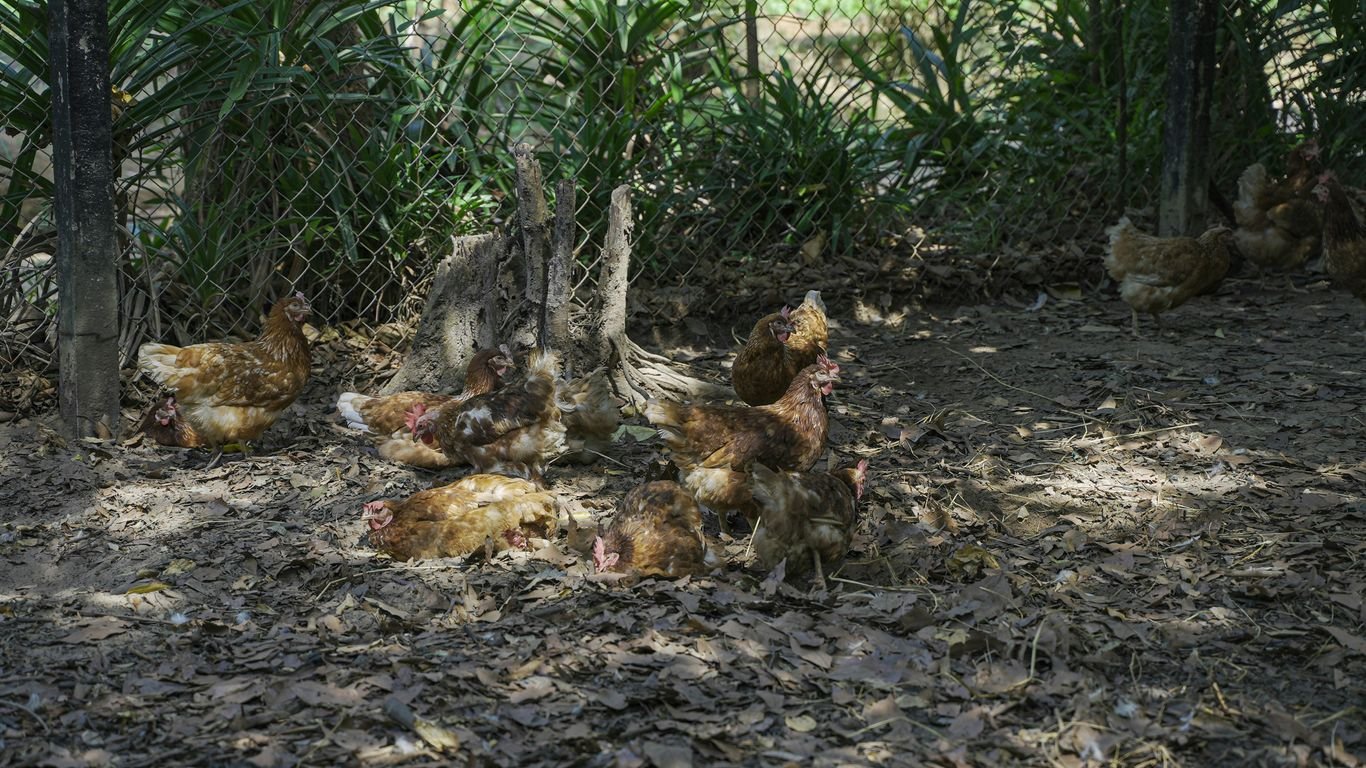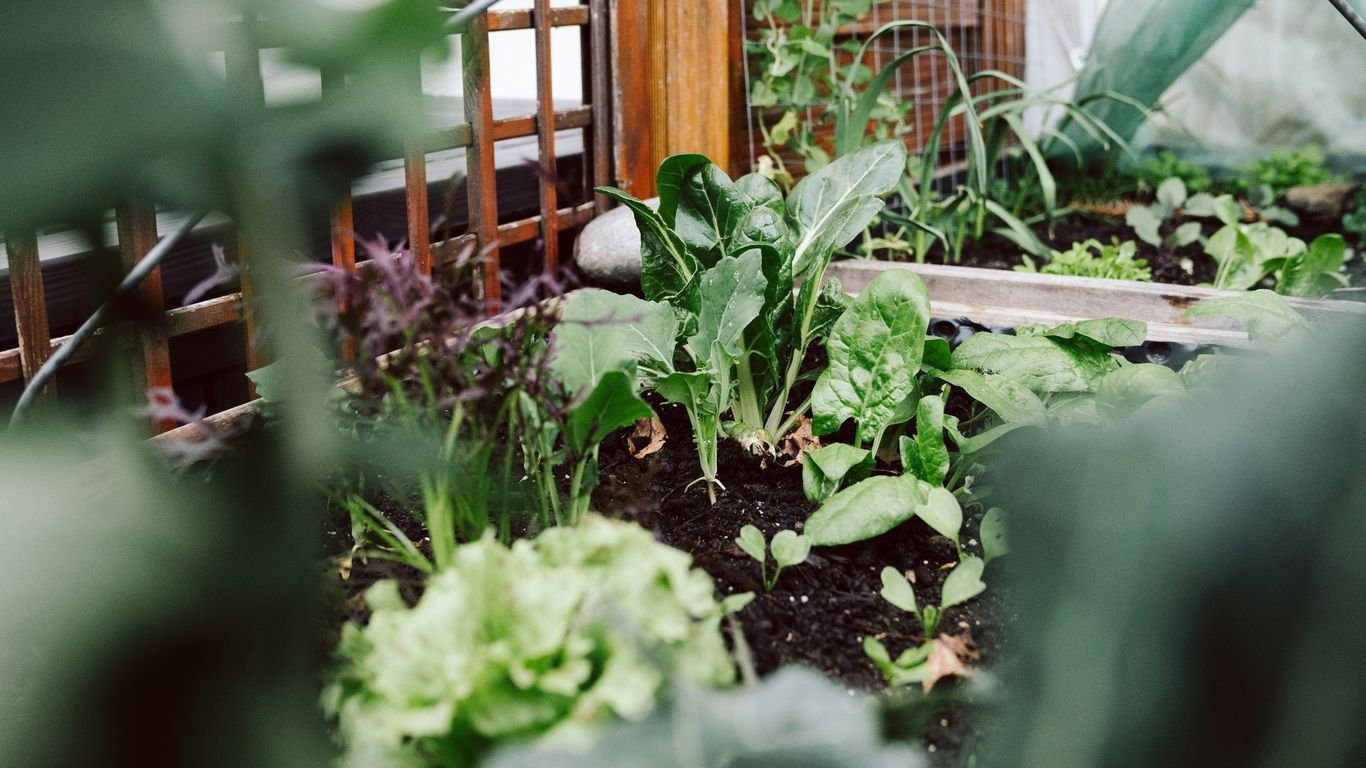Raising Chickens for Eggs: Cost vs. Store-Bought Comparison

Thinking about getting some chickens for fresh eggs? We’ve been looking into the whole thing ourselves, and it turns out there’s a lot to consider. It’s not just about grabbing a few hens and hoping for the best. We’re comparing the upfront costs, the ongoing expenses, and how it all stacks up against just buying eggs from the store. Let’s break down the raising chickens for eggs cost and see if it makes sense for us.
Key Takeaways
- The initial investment for raising chickens, including the flock, coop, and supplies, can be significant, often costing several hundred dollars or more.
- Ongoing costs for feeding, bedding, and potential health care add up, with feed being a major recurring expense that fluctuates with market prices.
- While not immediately cheaper, raising chickens can become more economical over time, especially if egg prices continue to rise, potentially reaching a break-even point after a year or two.
- Beyond the monetary aspect, raising chickens offers benefits like fresher, more nutritious eggs, increased food security, and valuable educational opportunities.
- Factors like chicken breed, feed choices, and predator protection significantly influence the overall raising chickens for eggs cost, requiring careful planning and management.
Understanding The Initial Investment In Raising Chickens
Getting started with raising chickens for eggs involves a few upfront costs that we need to think about. It’s not just about buying the birds; there’s a whole setup involved to make sure they’re safe and happy. This initial investment is probably the biggest hurdle for most folks considering a backyard flock.
The Price Tag On Your New Flock
First off, you’ve got to get the chickens themselves. Baby chicks can range from about $4 to $25 each, depending on the breed. If you’re looking at pullets (young hens that are almost ready to lay), they’ll cost a bit more. Most people start with a small flock of about 3-6 hens, but you’ll need at least two for them to be comfortable and lay well. So, for a starter flock of four, you’re looking at roughly $20 to $100, give or take. Remember, you can’t just have one chicken; they need company!
Setting Up A Safe Haven For Your Hens
Next up is the coop. This is their home, their castle, their safe space from predators and the elements. You can buy pre-made coops, which can be quite pricey, or you can build your own if you’re handy. A basic, functional coop for a few hens might set you back anywhere from $250 to $500, sometimes more if you go for something larger or more elaborate. We found that even a simple coop needs to be sturdy and well-ventilated. Predator-proofing is also a big deal here; think about adding hardware cloth to openings and maybe an apron around the base to stop critters from digging in. This could add another $50 to $100 to your setup cost. For a general idea, initial setup for four chickens can be around $162, but that’s just a starting point.
Essential Supplies For Happy Hens
Beyond the birds and the house, there are a few other bits and bobs you’ll need. You’ll need feeders and waterers. These can be simple gravity feeders or more elaborate setups. Budget around $50 for these. Then there’s bedding – pine shavings or straw are common choices. You’ll need a good amount to start, and this is an ongoing cost, but for the initial setup, maybe another $20-$30. Don’t forget a heat lamp for the chicks if you’re starting with them, and a chick starter kit can be really helpful. It’s a lot to think about, but getting these basics right from the start makes everything else much smoother.
Ongoing Expenses For Your Backyard Flock

So, you’ve got your coop all set up and your lovely ladies are settled in. Now, let’s talk about what it actually costs to keep them happy and laying. It’s not just a one-time setup fee, you know. There are regular things we need to spend money on to keep our flock healthy and productive.
The Daily Grub: Chicken Feed Costs
This is probably our biggest recurring expense. Chickens are basically eating machines, and they need good quality food to lay those delicious eggs. We’re talking about layer feed, which is specially formulated for hens. The price can really vary depending on the brand and where you buy it. A 50-pound bag might cost anywhere from $20 to $50, sometimes even more for premium organic options. A small flock of about six hens can go through a 50-pound bag in roughly two to three weeks. So, if you do the math, that adds up pretty quickly over the course of a year. We try to buy in bulk when we can find a good deal to save a bit.
Keeping Them Healthy: Supplements And Care
While our girls don’t need daily vet visits like a dog or cat, we do like to keep a little stash for any unexpected health needs. This might include things like probiotics to keep their digestion in check, or maybe some electrolytes if they’re stressed. We also make sure to deworm them periodically. It’s not a huge expense, but it’s wise to budget maybe $50 to $100 a year for these little health boosters and preventative measures. It’s better to be prepared, right?
Bedding And Beyond: Coop Maintenance
Keeping the coop clean is super important for the health of our chickens and to keep any odors under control. We use pine shavings or straw for bedding, and we have to replace it regularly. How often depends on the size of the coop and the number of chickens, but we’re usually doing a full clean-out and refresh every few weeks. The cost of bedding can add up, especially if you have a larger coop. We also need to factor in occasional repairs to the coop or run, like fixing a loose board or replacing some wire. It’s not a massive cost each month, but it’s something to keep in mind for upkeep.
We’ve found that using kitchen scraps and garden waste can significantly cut down on the amount of commercial feed our chickens consume, especially during the warmer months when bugs and greens are plentiful. It’s a win-win: less waste for us and tasty treats for them!
Comparing The Cost Of Homegrown Versus Store-Bought Eggs
So, we’ve talked about the costs of getting started and keeping our feathered friends fed and happy. Now, let’s get down to the nitty-gritty: how does the price of our homegrown eggs stack up against what we pay at the grocery store?
Calculating Your Per-Dozen Egg Cost
This is where we crunch the numbers. To figure out our cost per dozen, we need to look at our ongoing expenses – feed, bedding, any supplements, and even a little bit for electricity if we’re heating a coop in winter. Then, we divide that total by the number of dozens we’ve collected over a specific period, say, a month or a year. It’s not an exact science, as some months we might get more eggs than others, but it gives us a good ballpark figure.
Let’s say, for example, our monthly expenses for feed and bedding come out to $30. If our flock of six hens lays an average of 20 dozen eggs a month, our cost per dozen is $30 / 20 = $1.50. This is a simplified example, and your actual cost will depend heavily on your specific expenses and egg production.
The Grocery Store Egg Price Tag
This part is pretty straightforward. We just need to check the current prices at our local supermarkets. Prices can fluctuate quite a bit, especially with recent events affecting supply chains. We’ve seen prices jump significantly, making those store-bought cartons feel a lot heavier on the wallet.
Here’s a general idea of what we might expect:
| Egg Size/Grade | Average Price Per Dozen (October 2025) |
|---|---|
| Large, Grade A | $5.50 – $7.50 |
| Organic | $7.00 – $9.00 |
| Pasture-Raised | $6.00 – $8.50 |
These are estimates, and actual prices will vary by location and store.
When Does Raising Chickens Become Economical?
This is the million-dollar question, right? For a long time, the answer was usually ‘not really, if you’re just looking at the egg price.’ Commercial farms have economies of scale that are hard to match. However, with the rising cost of store-bought eggs, the break-even point is shifting. It often takes a year or two for the initial investment in coop and chickens to be recouped through egg savings.
Here are a few things to consider:
- Initial Investment: The upfront cost of buying chickens and building a coop is significant. This needs to be factored in over the lifespan of your flock.
- Egg Production: The more eggs your hens lay, the lower your per-dozen cost becomes.
- Feed Costs: Buying feed in bulk or finding local sources can reduce this ongoing expense.
- Egg Prices: The higher the price of store-bought eggs, the faster you’ll see savings from your own flock.
While the pure dollar-for-dollar savings might not be immediate, the value of fresh, high-quality eggs, combined with the other benefits of raising chickens, often makes it a worthwhile endeavor even if the numbers don’t perfectly balance out in the first year.
Ultimately, whether it’s ‘cheaper’ depends on your perspective and what you value. If you’re solely focused on the lowest possible price per egg, it might take time. But if you factor in freshness, knowing where your food comes from, and the satisfaction of self-sufficiency, the equation changes.
Beyond The Bottom Line: Other Benefits Of Raising Chickens
So, we’ve crunched the numbers, and maybe raising chickens for eggs isn’t always the cheapest option upfront. But honestly, there’s so much more to it than just the cost per dozen. It’s about the whole experience and the perks that come with it.
Fresher, More Nutritious Eggs
Let’s talk about taste first. The eggs we get straight from our coop just taste better. They’re richer, the yolks are a deeper color, and you can really tell the difference. Plus, we know exactly what our hens are eating, which means we’re getting eggs with a better nutritional profile. It’s hard to beat the freshness and quality of an egg laid just hours before it hits your plate. We’ve noticed that eggs from our flock often have more omega-3s and vitamins compared to store-bought ones, especially if our girls are out foraging and eating a varied diet.
Food Security And Sustainability
Having our own egg-laying hens gives us a little sense of security. We’re not as reliant on the grocery store supply chain, which, as we’ve seen, can be unpredictable. It feels good to know we can provide a consistent source of protein for our family. It’s also a step towards being more sustainable. We can use kitchen scraps to supplement their feed, reducing waste. And the chicken manure? That’s gold for our garden, cutting down on the need for store-bought fertilizers. It’s a nice little closed-loop system we’ve got going on.
The Joy And Educational Value Of Chickens
Beyond the practical stuff, there’s just a simple joy in watching our chickens. They’re entertaining little creatures! Seeing them scratch around, take dust baths, and interact with each other is surprisingly relaxing. It’s a great way to connect with nature, even in our backyard. For families, it’s an incredible learning opportunity. Kids can learn about where food comes from, responsibility, and even a bit about biology and animal care. It’s a hands-on lesson that sticks with them way more than just reading about it in a book. We’ve found that the daily routine of caring for them, collecting eggs, and just observing their quirky personalities has added a lot of happiness to our lives.
Factors That Influence Your Raising Chickens For Eggs Cost
When we think about raising our own chickens for eggs, it’s easy to get caught up in the excitement of fresh eggs. But we also need to be realistic about the costs involved. It’s not just a one-time purchase; several things can really change how much we end up spending. Let’s break down some of the big ones.
Breed Matters For Egg Production
The type of chicken we choose to bring into our backyard flock can make a surprising difference in our egg output and, therefore, our cost-effectiveness. Some breeds are just naturally better layers than others. For instance, Leghorns are famous for their prolific egg-laying, often giving us an egg almost every day. On the other hand, breeds like Orpingtons or Wyandottes might be more focused on meat production or have a calmer temperament, and they might not lay quite as many eggs. If your main goal is a steady stream of eggs to replace store-bought ones, picking a high-production breed is key.
Here’s a general idea:
- High-Production Layers: Leghorns, Rhode Island Reds, Plymouth Rocks, Australorps.
- Dual-Purpose (Good Layers & Good for Meat): Orpingtons, Wyandottes, Buckeyes.
- Ornamental/Pet Breeds (Lower Egg Production): Silkies, Polish, Brahmas.
Feed Choices And Cost Savings
Chicken feed is probably going to be our biggest ongoing expense. What we choose to feed our flock can really impact our budget. We can opt for standard commercial layer feed, which is formulated to give them everything they need for good egg production. This is usually the most straightforward option. However, we can also look for ways to save money. This might involve buying feed in bulk if we have the storage space, or perhaps supplementing their diet with kitchen scraps (making sure they are safe and appropriate for chickens, of course!). Some folks even grow their own fodder or sprouts to add to the feed. Finding a balance between cost, nutrition, and convenience is important here.
- Commercial Layer Feed: Balanced nutrition, convenient, but can be pricey.
- Bulk Buying: Reduces cost per pound, but requires storage.
- Supplementing: Using safe kitchen scraps or homegrown fodder can reduce feed costs but requires more effort and knowledge.
We need to remember that a chicken eats a fair amount of feed each day. A rough estimate is about a quarter-pound of feed per chicken per day. So, for a small flock of six chickens, that adds up to nearly 550 pounds of feed per year! This is why feed costs are such a significant factor in our overall budget.
The Impact Of Predator Protection
Protecting our flock from predators is non-negotiable. Depending on where we live, we might be dealing with raccoons, foxes, hawks, or even neighborhood dogs. The cost of predator protection can vary. A basic setup might involve reinforcing the coop with sturdy wire mesh and ensuring there are no gaps. More elaborate systems could include electric fencing or motion-activated lights. Investing in good predator protection upfront can save us a lot of heartache and expense down the line, not to mention the loss of our beloved hens.
- Basic Protection: Sturdy coop construction, hardware cloth over openings.
- Intermediate Protection: Adding aprons to the coop base to deter digging, secure latches.
- Advanced Protection: Electric fencing, predator-proof nesting boxes, secure runs.
The Long-Term View: Is Raising Chickens Worth It?
So, we’ve crunched the numbers, looked at the upfront costs, and figured out the ongoing expenses. Now, the big question: is keeping our own flock really worth it in the long run? For us, the answer is a resounding yes, even if the initial investment takes a little while to pay off.
When Your Flock Becomes Self-Sustaining
It’s true that in the beginning, you’re spending money on chicks, coops, feed, and supplies. But after the first year or so, things start to shift. Once your hens are laying consistently, and you’ve got a good rhythm going, the cost per dozen eggs drops significantly. We’ve found that by selling our extra eggs at local farmers’ markets or to neighbors, we can often cover a good chunk of our feed costs. It feels pretty good to have your flock essentially paying for itself!
The Emotional Investment In Your Hens
Beyond the dollars and cents, there’s a whole other layer to this. We’ve gotten really attached to our girls. Watching them scratch around in the yard, take dust baths, and greet us with happy clucks is genuinely relaxing. They’re not just egg-laying machines; they’re part of the family. This emotional return is something you just can’t put a price tag on. Plus, teaching the kids about where food comes from and the responsibilities involved has been incredibly rewarding.
Is It Cheaper To Raise Chickens Over Time?
Let’s be real, the grocery store egg prices aren’t going down anytime soon. When we compare the current cost of store-bought eggs to what it costs us to produce our own, especially after the initial setup, raising chickens definitely starts to look more economical. It might take a year or two to break even, depending on your setup and how much you spend initially, but over the lifespan of your flock, we’re confident it’s a worthwhile investment.
Here’s a rough idea of how the costs can balance out over time:
| Year | Initial Investment | Annual Ongoing Costs | Total Annual Egg Cost (Homegrown) | Average Store-Bought Egg Cost (per dozen) | Savings/Loss |
|---|---|---|---|---|---|
| 1 | $500 | $300 | $4.00 | $5.00 | -$100 (Loss) |
| 2 | $0 | $300 | $2.50 | $5.50 | +$150 (Savings) |
| 3 | $0 | $300 | $2.00 | $5.75 | +$225 (Savings) |
| 4 | $0 | $300 | $2.00 | $5.75 | +$225 (Savings) |
| 5 | $0 | $300 | $2.00 | $5.75 | +$225 (Savings) |
While the numbers can be a bit tricky to pin down exactly, especially with fluctuating feed prices and egg market rates, the long-term trend points towards savings. It’s not just about the money, though. The peace of mind, the connection to our food, and the sheer enjoyment of having these quirky birds around make it a win in our book.
So, Should We Raise Chickens for Eggs?
Alright, so we’ve looked at the numbers, and it’s clear that raising chickens for eggs isn’t always the cheapest option right off the bat. There are definitely some upfront costs, like getting the coop and the chicks themselves, and it takes a while before they start laying. Plus, we’ve got to factor in feed, bedding, and, let’s be honest, the occasional vet visit or supplement. But here’s the thing: when we think about the rising price of store-bought eggs, and all the other good stuff that comes with having our own flock – like super fresh, tasty eggs, knowing exactly where our food comes from, and honestly, just the enjoyment of watching them peck around the yard – it starts to feel like a pretty good deal. It’s more of a long-term thing, a marathon, not a sprint, but for us, the benefits seem to outweigh the costs, especially when we consider the quality and peace of mind we get.
Frequently Asked Questions
How much does it cost to get started with raising chickens?
Getting started can cost a bit, mostly for the coop and the chickens themselves. We’ve seen setups range from a few hundred dollars for a basic setup to over a thousand for something more elaborate. Buying chicks can cost a few dollars each, and a good coop might be $250 or more, depending on size and materials. Don’t forget feeders, waterers, and initial bedding, which can add another $50 or so.
What are the ongoing costs of keeping chickens?
Once you’re set up, the main ongoing cost is chicken feed. A 50-pound bag might cost around $20, and a flock of about six chickens can go through nearly 550 pounds a year, so that adds up to roughly $220 annually. We also need to factor in bedding for the coop, which is a monthly expense, and occasional supplements for their health.
When do chickens start laying eggs, and how many can we expect?
Chicks won’t start laying eggs until they’re about six months old, so there’s a waiting period. During their peak, a healthy hen might lay 5 to 6 eggs a week. However, they do take breaks, especially in the fall and winter, so egg production isn’t constant year-round. Older hens also lay fewer eggs.
Is it really cheaper to raise our own chickens than buy eggs?
Honestly, in the short term, it’s usually not cheaper. The initial investment in the coop and birds is significant. However, as egg prices keep going up, raising our own flock can become more economical over time, especially if we plan to keep them for several years. It really becomes a long-term investment.
What are the benefits of raising chickens besides saving money?
Oh, there are many! The eggs are incredibly fresh and taste amazing. We also get a sense of food security, knowing where our food comes from. Plus, it’s really rewarding and educational, teaching us about nature, responsibility, and sustainability. Watching them is also surprisingly relaxing and fun!
How much time does it take to care for a flock of chickens?
It’s not a huge time commitment, but it does require daily attention. We need to collect eggs, make sure they have fresh food and water, and let them out in the morning and secure them at night. Cleaning the coop regularly is also part of the routine. It’s manageable, especially if we think of them as part of our daily chores.






